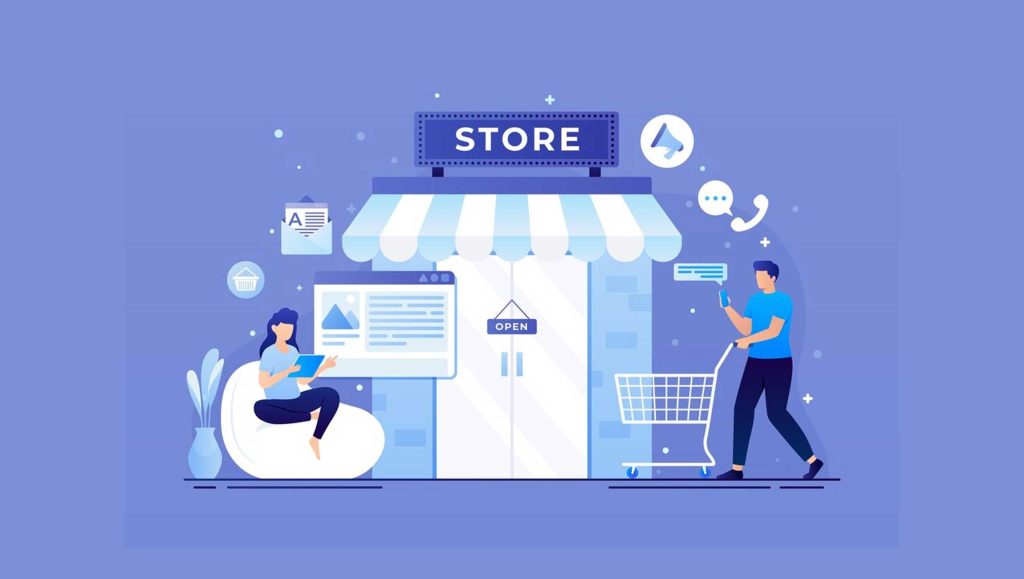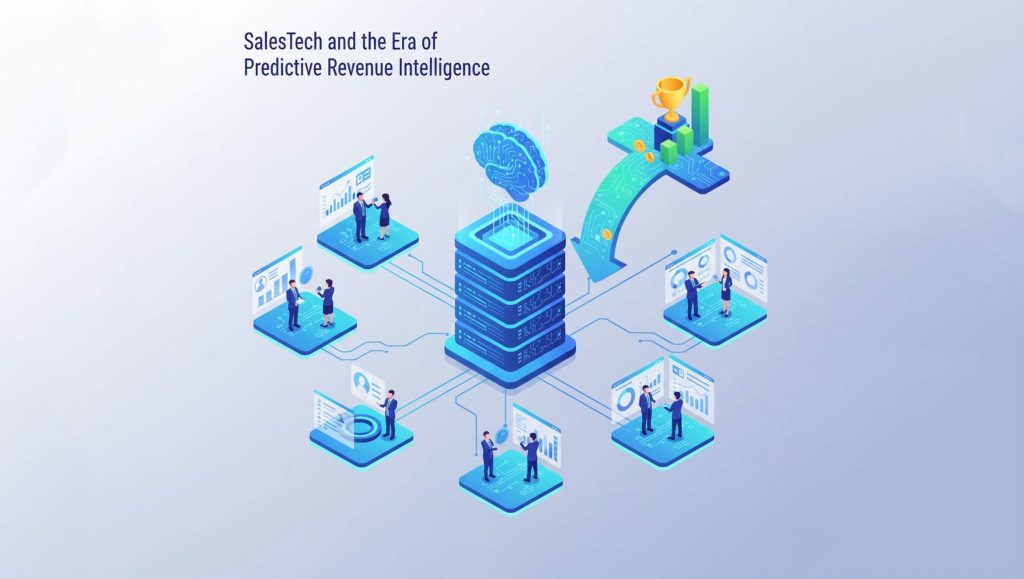As of January 2024, the global population is nearly 8 billion, of which 2.64 billion are online shoppers and this number is growing daily. So, nearly 33% of the world’s population makes use of e-commerce. Thus, digital storefronts are becoming indispensable for companies. These online marketplaces function similarly to virtual stores, enabling companies to list and sell products online in a manner identical to a real store.
These digital storefronts have several benefits, such as helping the company expand its customer base, making buying easy, and responding to consumer preferences. In today’s retail environment, digital storefronts are critical for fostering strong customer relationships, increasing sales, and building strong customer connections. Let’s look at the evolution of digital storefronts and user experience. We will discuss the principles and best practices for designing a visually appealing and user-friendly digital storefront.
Evolution of Retail: From Brick-and-Mortar to Digital Storefronts
Over the centuries, retail has experienced tremendous change. To start, the classic brick-and-mortar establishments that have long served as the foundation of trade have seen major change. Customers may engage with things directly, get help from real people, and enjoy shopping in a tactile setting at these physical places. Storefronts in busy marketplaces and shopping centres served as centres of social contact and economic activity for centuries, dominating the retail landscape.
1. The emergence of online shopping
When groundbreaking websites like Amazon and eBay were introduced in the 1990s, the e-commerce revolution got underway. These platforms laid the groundwork for the expansion of e-commerce by popularizing the idea of online buying. They motivated numerous other firms to create a digital presence by showcasing the Internet’s potential as a retail channel.
2. Mobile Commerce
Mobile commerce (m-commerce) emerged in the 2000s with the increasing use of smartphones. The ease of use and accessibility of online purchasing was further enhanced by this breakthrough, which let customers shop on their mobile devices. Retailers now need to have mobile-optimized websites and apps to reach customers on the go and take advantage of the growing trend of mobile shopping.
3. Social Commerce
Social media and e-commerce have merged seamlessly in recent years thanks to the integration of shopping capabilities by platforms like Facebook and Instagram. Social media is used in social commerce to help consumers find products and make decisions about what to buy. Social media apps that allow users to shop directly within them have opened up new ways for firms to interact with consumers, boost sales, and build loyalty towards the brand.
4. Digital Transformation
Digital storefronts were introduced with the emergence of the Internet in the late 20th century, which completely changed the retail industry. With the advent of e-commerce, consumers now have a practical online shopping option from the comfort of their homes, replacing traditional retail. The digital revolution was propelled by technological breakthroughs, rising internet usage, and evolving consumer tastes. Online shopping platforms quickly gained popularity and revolutionized the retail business by providing unmatched ease, a greater selection of products, and frequently lower pricing.
Necessity Of A Digital Storefront
A professionally designed digital storefront is essential for drawing in and keeping customers in the competitive world of e-commerce. It acts as a company’s online persona, influencing consumer decisions and creating lasting impressions. In addition to improving the shopping experience, an aesthetically pleasing and intuitive digital storefront increases customer engagement and conversion rates.
Benefits of Digital Storefronts Compared to Traditional Retail
The potential of digital stores to reach a worldwide audience is one of their biggest advantages. Online retailers can draw in and interact with consumers from all over the world, in contrast to physical stores, which are limited by location. Businesses can access new markets, grow their clientele, and generate higher sales volumes because of this broad reach.
1. Reduced Prices
The expenses of running an online store are usually cheaper than those of maintaining a traditional retail location. Rent, utility, and in-store employee costs are greatly lowered or eliminated. Digital storefronts can also automate processes and manage inventories effectively, which can further cut expenses and increase profit margins.
2. Easy accessibility
Digital storefronts provide businesses and customers with unparalleled ease. Customers are not limited by the hours and locations of physical stores and can shop around the clock from any location with internet access. This convenience increases client pleasure and loyalty while also improving the shopping experience.
3. Data Analytics
Large volumes of consumer data may be gathered and analyzed thanks to digital storefronts, which offer insightful information about trends, preferences, and purchasing habits. Companies can use this data to enhance overall consumer interaction, optimize product offers, and create tailored marketing campaigns. Making decisions based on data is a major competitive advantage in the world of digital retail.
Understanding Digital Storefront Design
An online replica of a brick-and-mortar store is called a digital storefront. It offers every component needed for clients to browse, choose, and buy products and services online. This includes the home page, product listings, search capabilities, shopping cart, and checkout procedure of the website. A digital storefront in contemporary e-commerce is a holistic digital experience that embodies the brand’s identity and values, not just a platform for sales.
Importance of Aesthetics, Usability, and Functionality in Digital Storefront Design
Let us understand why aesthetics, usability, and functionality are necessary for creating high-end digital storefront design:
1. Aesthetics:
Attracting and keeping customers are significantly affected by visual appeal. A positive first impression can be produced by a well-designed storefront with an eye-catching layout, eye-catching color schemes, and high-quality photographs. Building credibility and trust is facilitated by expert design components and consistent branding.
2. Usability:
The goal of usability is to make the storefront simple to use and navigate. This features simple product classification, easy-to-use search options, and navigation menus. Reducing bounce rates and raising customer satisfaction requires making sure that users can quickly locate what they’re looking for and seamlessly navigate the purchasing process.
3. Functionality:
All the technical elements that go into a digital storefront’s smooth operation are included in its functionality. This includes responsiveness on mobile devices, safe payment methods, quick loading times, and reliable backend systems. The storefront’s functional design guarantees dependable operation and a hassle-free purchasing experience.
Impact of Digital Storefront Design on Customer Engagement and Conversion Rates
Customer behavior is directly influenced by the design of a digital storefront. A well-thought-out storefront can increase consumer engagement by offering a productive and pleasant retail environment. Notable effects consist of:
● Extended Duration of Stay on the website: A visually appealing and user-friendly storefront entices clients to linger longer, perusing the offerings.
● Increased Rates of Conversion: Conversion rates can be greatly increased by using efficient design components like individualized recommendations, unambiguous calls-to-action, and streamlined checkout procedures.
● Increased Customer Loyalty: Satisfied customers are more likely to make repeat purchases and recommend businesses to others, which increases customer loyalty.
We can say that an e-commerce business’s success greatly depends on the layout and usability of its digital storefront. Businesses can design captivating digital storefronts that attract customers and generate sales by emphasizing aesthetics, usability, and functionality. Hence, it leads to more conversions.
Visual Design Principles
More than just placing things online is involved in creating an interesting and successful digital shop; it also involves building an experience that is both aesthetically pleasing and straightforward to use. This calls for a deep comprehension of visual design concepts that enable one to skillfully lead customers through their purchasing process. Achieving this goal requires several key elements, including best practices for product displays and promotional banners, the use of colors, font, imagery, and visual hierarchy.
Visual Hierarchy’s Significance in Leading Users Using the Online Store
The term “visual hierarchy” describes how elements are presented and arranged to convey their relative importance. This idea directs customers’ attention to the most important sections of a digital storefront, like calls-to-action, product highlights, and navigational menus. The following are the key aspects of the hierarchy:
- Size and Scale: Naturally, larger elements grab the eye more. For example, a large “Buy Now” button is more likely to be noticed by the user than a smaller piece.
- Color and Contrast: Crucial sections can be emphasized by using high-contrast elements, which stick out. For instance, a sale banner with vibrant colors against a subdued background attracts attention right away.
- Placement and Design: Putting crucial information at the top or in the middle of the page makes it more likely that users will interact with it. Important elements can be positioned along the “F-pattern” layout, where visitors normally scan a page from top to bottom and left to right.
A digital storefront may make sure that consumers move seamlessly through the intended path—from landing on the homepage to completing a purchase—by strategically utilizing these features.
Employing Typography, Colors, and Images to Develop a Visually Captivating and Harmonious Brand Identity
To build a visually appealing and harmonious brand identity, typeface, color, and picture selection are crucial because these components combine to produce a unified and memorable visual experience that appeals to consumers. A consistent color scheme enhances brand awareness and elicits particular feelings, while well-selected typography can communicate the personality and tone of the company.
Good, pertinent photos enhance these components by showcasing the brand’s principles and products, which adds interest to the whole layout. When these elements are expertly combined, they strengthen the brand narrative, set the company apart in a crowded market, and create a closer bond with the audience—all of which eventually increase sales and brand loyalty. Let’s look at these components carefully to understand why it is useful in creating a visually captivating and harmonious brand identity:
1. Colors:
When it comes to expressing feelings and brand identification, colors are extremely effective instruments. Subconsciously, they have the power to affect decisions and impressions.
- Brand Consistency: A recognizable and well-coordinated look can be achieved by using a color scheme that is consistent and represents your brand’s identity. For example, a luxury brand may communicate sophistication and exclusivity with a black, gold, and white color scheme.
- Psychological Impact: A variety of hues can elicit a range of feelings. While green is linked to peace and health and is appropriate for wellness brands, blue frequently communicates trust and security, making it appropriate for financial institutions.
- Functional Use: Elements can also be distinguished by color. Call-to-action buttons, for instance, stand out from the rest of the material when they are colored differently.
2. Typography:
The general look and feel of the digital storefront are greatly influenced by typography, which also has an impact on readability.
- Font Choice: It’s critical to choose typefaces that complement the personality of the brand. A classic, high-end brand might benefit greatly from a serif typeface, but a digital company might benefit more from a modern, sans-serif font.
- Hierarchy and Legibility: Users can be guided by establishing a typographic hierarchy by utilizing varying font sizes and weights. To improve readability, headlines, subheadings, and body text should all be easily distinguished from one another.
- Consistency: By creating a dependable and fluid visual flow, consistent font on all pages strengthens brand identification and enhances user experience.
3. Imagery:
Using imagery to properly showcase products and establish an emotional connection with users is essential.
- Relevance and Quality: It’s critical to have photos of the highest calibre that complement the brand’s messaging or products. Images that are unclear or unrelated can make users feel less satisfied and damage a brand’s reputation.
- Authenticity: Rather than using stock photos, using real, authentic images might increase engagement and trust. For prospective buyers, real-world images of products in use can offer a more relatable and realistic perspective.
- Consistency: Keeping an image style constant aids in the development of a unified brand identity, much like colors and typography do. This entails applying consistent lighting, composition, and filter styles to every image.
Best Practices to Make Visible Product Displays and Advertising Banners
Shopping is still mostly a visual experience, from large billboards to the carefully arranged merchandise in retail windows. Brick-and-mortar establishments have always been linked to visual merchandising. However, over the past few years, e-commerce companies have steadily increased their ability to create engaging and dynamic visuals. Following are some best ways to make the visible product displays and advertising banners appealing to your audience:
1. Detailed and Crystal Clear Images:
Excellent graphics are essential for successful product displays. Make sure every product shot is clear, and crisp, and captures a range of perspectives to give a complete picture. This increases customer trust while showcasing the product’s details. Incorporate functionalities such as zoom capabilities and 360-degree views to provide consumers with an engaging and dynamic experience.
With the ability to thoroughly examine the merchandise, these features help prospective customers feel more confident about their purchase by simulating an in-store experience. Make sure the product photos are sharp, have a lot of resolution, and feature several perspectives.
2. Educational Synopses:
Add brief but thorough descriptions that accentuate the salient characteristics of the product to go along with your pictures. To make information more readable and accessible, use bullet points to divide it up into manageable chunks.
This approach helps customers quickly understand the benefits and functionalities of the product, aiding in quicker decision-making. Efficient and succinct instructional summaries, which offer all pertinent details at a look, can greatly improve the entire purchasing experience.
3. Contextual Use:
Give buyers an example of how the product would be used in real-world situations to help them envision using it. For example, have furniture on display in a room to demonstrate its proportions and style compatibility, or have people walk around in apparel to emphasize how it fits and looks.
Contextual graphics can help shoppers visualize products in their own lives by bridging the gap between online shopping and real-world use. This realistic portrayal has the potential to persuade during the purchasing process.
4. Strong Visuals:
Use striking, high-contrast visuals to draw the viewer in. Promotional banners ought to be created with eye-catching images that quickly and effectively communicate the message. To grab the attention of the audience, use eye-catching pictures, dynamic graphics, and brilliant colors. More people will visit your product pages when you use effective graphics to boost the click-through rate (CTR) and overall engagement with the advertisement.
5. Clear Messaging:
Make sure your marketing messaging is clear and succinct. All important information, including call-to-action buttons, promo codes, and discounts, should be prominently presented so that the offer or promotion is the major focus.
A simple and unambiguous message makes it easier for customers to understand the value proposition quickly, which decreases misunderstanding and increases the advertisement’s efficacy. A persuasive message has the power to turn a bystander into a customer.
6. Scarcity and Urgency:
Use elements of urgency and scarcity to get customers to act more quickly. A sense of urgency can be created by employing strategies like limited-time deals and low-stock warnings, which encourage clients to buy now rather than later. Using psychological triggers that appeal to FOMO (fear of missing out) can effectively increase sales. Emphasizing a deal’s time-sensitive nature or restricted availability can encourage hesitant buyers to decide on a purchase right away.
7. Responsive Design:
Make sure your product displays and banners are fully responsive, which means they will adjust to fit different screen sizes and devices without any problems. This covers mobile phones, tablets, and desktop computers. Regardless of how visitors arrive at your website, an adaptable design ensures that your messaging and images are understandable and impactful. With more people buying on mobile devices, having a responsive design is essential to offering a dependable and easy-to-use experience and expanding your audience and influence.
A harmonious fusion of visual hierarchy, color, font, and images is essential for effective visual design in digital stores. Businesses may build a digital storefront that is not only aesthetically pleasing but also practical and user-friendly by following these guidelines and best practices, which will eventually increase engagement and conversion rates.
Read More: SalesTechStar Interview with Juan Jaysingh, CEO at Zingtree
Common UX mistakes made by the E-commerce Companies
When a user intends to make a purchase online then there can be some hurdles that may result in cart abandonment by the user. Hence, the user will choose a competitor to buy the product from. So, let’s see a few common e-commerce mistakes that can spoil the UX of your online store.
1. Lack Of Image Diversity
To completely comprehend the use cases and applications of your product, prospective buyers must be able to view it in a variety of environments. E-commerce businesses should, once more, try to provide as much information as possible about their product to entice customers to add it to their basket of products. Provide a realistic representation of the product by using many photos taken in different lighting conditions. If possible, think about adding dynamic forms like GIFs or movies.
2. Navigation leading to confusion
When someone visits your website for the first time your site should be able to fulfill the needs of the end users. The architecture and design should be simple, elegant, and understandable. The user must find it easy to navigate. No one likes to get lost while checking something specific and if the path is smooth and predictable then the user will buy from your site. A chatbot or a search option can also assist the user in the journey.
3. Troublesome Checkout
A checkout process should be easy to follow for the user and must be a top priority for online stores. It can happen if you take care of seamless UX. Checkout is, after all, the last action a user does before completing a transaction. Customers must therefore be able to quickly alter the contents of their carts, including altering a product’s size, number, or color. From inputting the mailing address to clicking “Place Order,” the checkout process should be simple and uncomplicated for them.
4. Fewer payment solutions
Providing a variety of payment options is a great approach to boost conversions and a frequently ignored accessibility factor. E-commerce businesses should ideally offer a variety of payment methods to their clients, such as Venmo, Apple Pay, and PayPal, to prevent restricting their customers to those who have access to debit or credit cards.
5. Absence of Meta Tags
Meta tags and alt text should be descriptive rather than presumptive to be effective. Careful naming conventions enhance a website’s accessibility in addition to its SEO value. It is not advised to use file names as alt text or load keywords into meta tags.
Few Essential UI Elements And Their Functions For Creating A Digital Storefront That Matters:
User interface (UI) components that are well-designed are essential to digital stores since they direct clients through the purchase process. Here are a few essential UI elements and their functions:
1. Navigation Menus: These menus serve as your store’s road map, letting customers explore product categories, get account details, and find important pages like “Contact Us” or “About Us.” For intuitive exploration, a navigation menu that is both clear and consistent is essential.
2. Search Bars: Users may locate specific products quickly with the use of search bars. They should be easily visible, preferably at the top of the page, and provide auto-complete recommendations to effectively narrow down searches.
3. Product filters: Based on parameters like size, color, price range, or brand, filters assist clients in reducing the number of products they choose. Good filters are arranged neatly and make it simple to customize the search results.
The Strength of Reliability and Natural Navigation
Two of the most important components of a user-friendly digital shop are consistency and easy navigation. This is why they are important:
1. Decreased Learning Curve: Users can rapidly become acquainted with your store when all pages have a consistent layout. They are less likely to become frustrated and are more likely to purchase since they have an innate sense of where to obtain what they need.
2. Enhanced User Experience: Customers may easily browse your store with intuitive navigation. Imagine a grocery store where, each time you enter, the bread aisle is in a new location. Such confusion is avoided by an intuitive digital store, making for a more pleasurable purchasing encounter.
3. Increased Sales: Consumers are more likely to make a purchase when they can quickly and easily find what they’re looking for. A well-designed user interface increases revenue by removing obstacles to conversion.
Enhancing User Interface: Mobile and Accessibility
It’s critical to optimize user interface elements for various screen sizes in the mobile-first world of today. Here are some pointers:
1. Simple Layout: Make sure the layout of your website adjusts itself to computers, tablets, and smartphones by using a responsive design. On touch screens, buttons and text should be large enough to tap with ease.
2. Simplified Menus: To conserve screen real estate and keep an interface looking neat, mobile devices may benefit from employing hamburger menus, which are menus that may be opened by clicking an icon with three horizontal lines.
3. Accessibility Features: Make sure your store is accessible to all users by including features like clear alt text for photos, high contrast themes, and screen reader compatibility.
You can design a digital storefront that facilitates a seamless shopping experience, maintains consumer engagement, and eventually increases sales by concentrating on five essential user interface aspects and giving user needs top priority.
Well-designed UX and UI For Your Store
The ease with which customers can traverse your store and finish a transaction is directly impacted by a well-designed user interface (UI) and user experience (UX). This is the reason why a well-designed UX and UI ensures a great experience for the user.
1. Clarity and Usability:
Your store’s layout and design should be simple to understand and intuitive, even for first-time customers. Customers may become irate and abandon their carts as a result of confusing navigation. Quick search results can be obtained by users with the use of features like a chatbot and a search bar.
2. Frictionless Checkout:
The procedure for checking out must be as easy as possible. It should be simple for users to modify their carts and pay for their purchases. Allowing clients to choose their preferred payment method is ensured by providing a range of options.
3. Multiple Product Images:
Potential buyers must be able to see the item they are thinking about purchasing. Including high-quality photos in a variety of scenarios and from different perspectives aids in their understanding of how the product functions and looks. For a more dynamic representation of the product, you might also think about utilizing GIFs or videos.
4. Accessibility:
People of all abilities should be able to visit your website. This includes making use of alt text for photos and descriptive meta tags, which not only enhance SEO but also make your material easier to read for people with visual impairments.
To put it briefly, a well-thought-out user interface and user experience (UI/UX) improves the user experience by making it simple for users to locate what they’re looking for, finish their purchase, and ultimately feel satisfied with their purchasing experience. This can result in better sales and customer loyalty.
Best Practices for User Experience (UX) to Ensure a Smooth Shopping Process
Following are the best practices to follow when you are creating the digital storefront so you can ensure a smooth shopping experience for your users:
1. Understanding Your Customers: The Foundation for Achievement
In e-commerce, great user experience begins with knowing your target market. This entails delving into user behavior and preferences in addition to demographics. How to do it is as follows:
- User research: To learn about the wants, problems, and preferred shopping paths of users, do surveys, A/B testing, and user interviews.
- Analytics Tracking: Monitor user activity on your platform by utilizing web analytics solutions. Examine user flows, well-liked product categories, and typical sites of abandonment.
- Heatmaps and Session Recordings: Clickthrough patterns and user behavior can be seen with heatmaps. Recordings from sessions provide an instant view of how visitors interact with your website.
By being aware of these components, you may customize the purchasing process and meet the individual demands of your customers.
2. Making Purchasing Simpler: Less is More
Optimizing the buying process is essential for minimizing obstacles and maintaining consumer interest. The following are some tactics:
- Clear and Intuitive Navigation: Provide a consistent and clear navigation bar to make it simple for users to find what they’re looking for. Make use of clear categories, subcategories, and a powerful search engine.
- Product Sorting and Filtering: Give customers the option to arrange products according to a range of factors, such as brand, color, price, or rating. This facilitates consumers’ rapid and effective choice-narrowing.
- Swift and effortless checkout: Enable guest checkout alternatives and streamline checkout forms to ensure a swift and effortless checkout process. Reduce the amount of fields that must be filled out and, if feasible, use auto-fill.
3. Creating Trust with Customer Reviews and Social Proof
In the digital world of today, trust is essential. Here’s how to increase consumer confidence by utilizing social evidence and reviews:
- Customer Reviews and Ratings: On product pages, show real customer reviews and ratings. Offer rewards or loyalty points to users to entice them to write evaluations.
- Highlight social proof components: Highlight social proof components, such as media mentions, influencer endorsements, and user-generated material.
- Showcase Trust Signals: Put security badges, lucid return guidelines, and a variety of payment choices on display.
You may gain the trust of users and give them the confidence to make purchases by implementing these components.
Recall that UX is a continuous endeavor. It is imperative to consistently test, improve, and iterate your product in response to user feedback and data to ensure that your customers have an effortless and enjoyable purchasing experience.
Tools and Resources for User Experience Optimization and Digital Storefront Design
Creating a visually appealing digital shop requires both a seamless user experience (UX) and an attractive design. The following is a summary of suggested tools and resources to improve your online store:
1. Adobe Photoshop
Within the design industry, this is one of the most widely used tools. It’s also used by many talented designers to edit and produce excellent photos, graphics, and quick films. Adding and removing elements from existing photographs is made easy for users of Adobe Photoshop. This tool can be used to update visual content for eCommerce websites, such as background photographs or product images.
You can draw users in and keep them on the page for extended periods once you enhance the eCommerce platform’s image quality. A monthly or annual subscription is required to use the reasonably priced program Adobe Photoshop. Utilize Photoshop’s mobile version to design while on the go and instantly alter any image’s objects, backgrounds, or colors. Additionally, you may use this program to resize photographs for optimization without sacrificing their quality.
2. Figma
The tool is gaining popularity in the graphic design field quite quickly. Professionals utilize it to enhance user experience and facilitate team collaboration. Making user interfaces that are visually appealing to visitors is made easier with Figma. Additionally, it features a whiteboard where users may jot down notes and generate ideas for projects. Prototypes and wireframes are also worked on with this instrument.
Figma may assist in creating an interactive layout with dynamic images and GIFs for an eCommerce website design theme. They can be included on the main page to demonstrate the development or operation of a product. GIFs can be used to illustrate a process in place of static graphics. Figma offers a variety of pricing plans; select one based on your needs. It’s a reasonably priced solution that will enable you to quickly increase organic traffic and create a visually appealing and flexible website.
3. BigCommerce
An additional tool for hosting an eCommerce website is this one. Your internet store can be quickly created or set up, and you can ensure that everything works properly. BigCommerce can save clients money on problems down the road, even though it may be a little more expensive than some of the other solutions on the list.
The drag-and-drop capability makes it simple to create landing pages and makes visitor navigation easier. The software works with heavily trafficked websites and guards against lags and crashes as well. Use the drag-and-drop editor to quickly construct a website that allows people to adjust or enhance. Browse through the features.
4. Shift4Shop
The eCommerce tool’s goal is to support businesses as they expand and grow over time. It includes an unlimited feature beginning plan that is quite reasonably priced. With the aid of this website builder, entrepreneurs can get their products on the market and get going right away. It has attributes like seamless product page integration and responsive themes.
This might assist you in developing a platform that loads quickly across all platforms. Shift4Shop makes it simpler to optimize a website’s design and aesthetic components so that it will appear highly in Google search results. For new entrepreneurs and small companies wishing to redesign their websites, this tool is fantastic. Create your eCommerce store using a visually appealing template to sell anything.
5. SurveyMonkey
With its ability to provide you with consumer feedback and insights that you can utilize to enhance many areas of your business, SurveyMonkey may be a very useful tool for your online store. Before the release of new products, use surveys to determine potential problems, collect feature ideas, and assess client interest.
Send surveys to customers after they make purchases to learn about their impressions of the company overall, the product, and their purchasing experience. Include surveys on your website to get user input on the checkout process, product details, and navigation. This can point out areas that need work. To test various product descriptions, email marketing campaigns, or website layouts, create surveys. Check which variations your audience responds to the best.
SurveyMonkey is available to e-commerce businesses of all sizes thanks to its free plan, which includes basic capabilities. The platform offers simple-to-use tools for creating surveys as well as alternatives for straightforward data display. Data analysis and transfer are made simple by integrations with different e-commerce systems. Thus, take into consideration utilizing SurveyMonkey to collect insightful consumer feedback and make data-driven judgments if you’re seeking methods to enhance your online business and obtain a competitive edge.
Simple To Follow Best Practices For Designing A visually Appealing Digital Storefront
Consider these best practices to make sure your site performs well during busy seasons, even in the face of changing consumer expectations and trends. Put your attention on well-chosen product recommendations, pertinent on-site search results, a captivating home page, and the ability to pay later.
1. Visual Appeal: The Craft of Drawing People in
Initial impressions count. An eye-catching image serves as a hook, luring viewers in and encouraging more exploration. Here’s how to design a visually appealing storefront:
- Superior Photographs: Expert product photography is essential. Display your products in crisp, well-lit pictures taken from a variety of perspectives. To provide context and elicit an emotional response, consider lifestyle photos that feature the product in use.
- Harmonious Color Scheme: Hues arouse feelings and impact consumer choices. Select a color palette that appeals to your target market and is consistent with your brand identity. To create a polished appearance, keep the store uniform throughout.
- The Benefits of Whitespace: White space avoids visual clutter and lets content breathe. It directs visitors’ attention to key components, including as calls to action (CTAs) and product imagery.
Make sure your storefront seamlessly adjusts to many screen sizes, including PCs, tablets, and smartphones, by using a modern and responsive design. In today’s world when mobile is king, responsive design is essential for a flawless user experience.
2. Facilitate Browsing With Category Landing Pages
Make your consumers’ buying experience even better with less technical work by designing simple navigation for them to use on your website. Clients frequently come in with a specific person, memory, or item in mind. Sort items into category landing pages to support these expectations and promote discoveries.
- Conventional Grouping: Sort goods into categories such as baking items, bicycles, and socks.
- Conceptual Grouping: Make groups based on themes. For example, under the category “camping,” you may group items like sleeping bags, camping coffee, and jackets. This comprehensive viewpoint may encourage more expansive purchasing choices.
To make these landing pages quickly and effectively, use tools such as Adobe Commerce’s Page Builder.
3. Usability: Efficient Navigation Brings Contented Clients
Having an eye-catching storefront is only half the fight. It must be easy for users to navigate and locate the content they’re looking for. The following are some top tips for creating user-friendly designs:
- Easy to Use Navigation: Arrange your product categories in a clear, comprehensible manner. Make easy-to-navigate menus, dropdowns, and labels available.
- Search Functionality: Users can locate certain products quickly with the help of a powerful search bar that includes autocomplete suggestions. Make sure the search results are precise and pertinent.
- Product Sorting and Filtering: Give customers the option to sort products according to brand, price, category, or other pertinent factors. Navigation is further improved by sorting options based on popularity, new arrivals, or discounts.
- Simple Checkout Procedure: Reduce the number of stages in the checkout process and provide guest checkout choices to make it more intuitive. To prevent cart desertion, give clear directions and progress indicators.
Customers expect to know exactly what the cost is when it will arrive, and how to get it when they shop. Make sure the following delivery details are visible on the product detail pages:
- Options for Shipping: Describe the several shipping options, prices, and lead times.
- Other Options: To give customers flexibility and convenience, provide options like curbside pickup or buy online, pick up in-store (BOPIS).
4. Content is King or Queen: Telling Stories That Sell
Your shop is given life by captivating content, which transcends looks and usefulness. Here are some tips for utilizing content to improve user experience:
- Captivating product descriptions: Product descriptions should go beyond the bare minimum. Write captivating product descriptions that emphasize features, solve problems, and convey the product’s backstory.
- High-quality videos: Compared to static photos, product films provide a stronger visual presentation of functionality, features, and use cases. For increased engagement, think about using explanatory videos or client testimonials.
- A blog and a resource hub: Include a resource centre or blog with educational articles on your line of work or sector. This boosts SEO, establishes your authority, and fosters trust.
5. Call to Action: Assisted Consumers in Making Purchases
Avoid leaving users in suspense. Clear CTAs tell users exactly what you want them to do, such as subscribe, add to the basket, or learn more. Here’s how to create CTAs that work:
- Strong Verbs: To draw attention and promote user involvement, utilize action-oriented verbs, such as “Buy Now,” “Learn More,” or “Add to Cart.”
- Contrasting Colors: Use contrasting colors that go well with your overall design strategy to make your CTAs stand out.
- Positioning Your CTAs Strategically: Place your CTAs near pertinent products or information. Depending on how important they are, use CTAs with different widths and levels of emphasis.
6. The Influence of Analytics and A/B Testing Constantly Adjust and Enhance
The digital space is ever-changing, and consumer tastes are not static. You can evaluate various design components and content variations using A/B testing to determine which ones your audience responds to the best. Analytics solutions offer important insights into user behavior, including user paths, abandoned carts, and popular product pages.
Final Thoughts
In the current digital environment, having a well-designed online business is now essential rather than a luxury. It’s the online shop that welcomes clients, displays your merchandise, and ultimately affects their buying choices. However, creating a digital storefront that effortlessly directs customers toward a pleasurable purchasing experience while also impressing with its stunning aesthetics is vital.
Digital storefronts give companies access to a global customer base, reduced expenses, ease of use, and data analytics tools. They offer chances for creative marketing approaches, greater money, more brand awareness, and individualized consumer experiences.
You can continuously improve the user experience and design your online shop to increase conversions and customer happiness by implementing the best approaches. You may create a visually appealing and user-friendly digital storefront by implementing these essential tips and best practices.
Understand that the internet world is always changing, so have an open mind, try new things, and adjust your plans in response to data and user input. Don’t be scared to defy expectations and include your distinct brand identity in your design. Making both usability and aesthetics a priority can help you build a friendly online environment that draws visitors in and enhances their experience. Businesses can successfully manage their digital storefronts, spur growth, and compete in the dynamic and cutthroat e-commerce market by putting these ideas and methods into practice.
Read More: Using ChatGPT for Sales





















